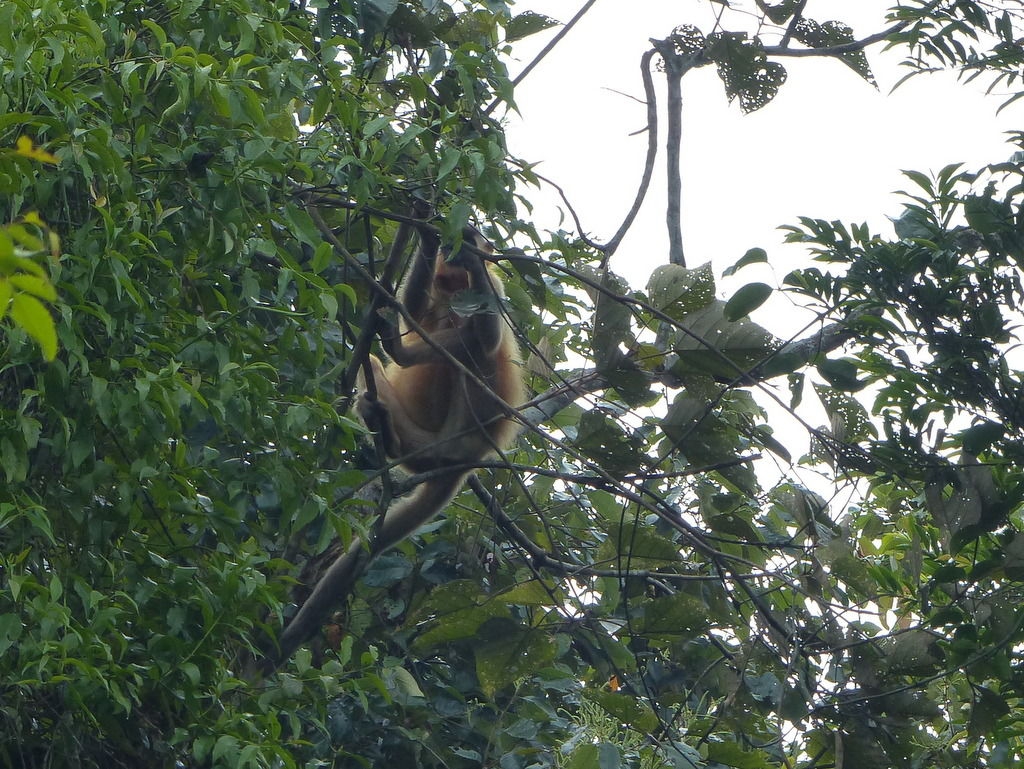| Citation |
|
Description |
Geographic Range [top]
Range Description: The species occurs in Bangladesh, Bhutan, north-eastern India (Arunachal Pradesh, Assam, Manipur, Meghalaya, Mizoram, Nagaland, and Tripura), and north-western Myanmar. Records from China are disputed and need to be confirmed (W. Bleisch pers. comm.). South Asian populations of Trachypithecus pileatus subspecies are known to exist in adjacent and sometimes overlapping areas of India, Bangladesh, Bhutan, and Myanmar. Various populations exist between 10 and 3,000 m in elevation (Molur et al. 2003).
Trachpithecus pileatus pileatus
Occurs in north-eastern India (Arunachal Pradesh, Assam, Meghalaya, and Nagaland) and north-western Myanmar. Widely distributed in the highlands south and east of the Brahmaputra and west of the Chindwin; in Myanmar found in the Chin Hills south to Mount Victoria; in India, the Karbi Anglong, Khasi, Garo, Naga, and Jaintia Hills, along with the Karbi Plateau and the Barail Range in Assam (Groves 2001).
Trachypithecus pileatus durga
Occurs in north-eastern and south-eastern Bangladesh and north-eastern India. Found adjoining the range of T. p. pileatus to the north, but at lower altitudes, from nearly sea-level up to 600 m; known from the Naga Hills, Lakhimpur, Golaghat, Cachar Hills, Samaguting, and Sibsagar (Groves 2001).
Trachypithecus pileatus brahma
Occurs in north-eastern India, where known only from the Dafla Hills, north of the Brahmaputra (Groves 2001).
Trachypithecus pileatus tenebricus
Occurs in Bhutan and north-eastern India. Found in the Manas region to the north of the Brahmaputra River (from 100 up to nearly 2,000 m) into Bhutan (Groves 2001; Molur et al. 2003).
Countries occurrence:
Native:
Bangladesh; Bhutan; India (Assam, Manipur, Meghalaya, Nagaland); Myanmar
Additional data:
? Lower elevation limit (metres): 10
? Upper elevation limit (metres): 3000
Range Map: Click here to open the map viewer and explore range.
Population [top]
Population: This species is the most common langur in north-eastern India (Choudhury 2001). Although sympatric with hoolock gibbons in South Asia, it is not as heavily impacted by the effects of habitat loss and is more adaptive, breeds more rapidly, and can move across fragments easily (A. Kumar and J. Das pers. comm.). However, the species has probably declined by more than 30% in the last 20 years, making it very vulnerable in its extremely fragmented locations (J. Das, A. Kumar and M. Singh pers. comm.; Molur et al. 2003) and it is predicted to decline at the same rate in the next 20 years (J. Das, A. Kumar and M. Singh pers. comm.; Molur et al. 2003). T. p. brahma is only known from its holotype, and may either be extinct or perhaps never really existed at all (the differences in its pelage may be attributable merely to seasonal variation).
Current Population Trend: Decreasing
Additional data:
? Population severely fragmented: No
Habitat and Ecology [top]
Habitat and Ecology: These animals are diurnal, predominantly arboreal, and folivorous (Molur et al. 2003). According to Srivastava and Mohnot (2001) they are found in subtropical evergreen, broadleaf, deciduous, and bamboo forests (Choudhury 2001). The generation length is inferred from that of other langur species to be 10-12 years (Molur et al. 2003).
Systems: Terrestrial
Threats [top]
Major Threat(s): Populations of this species face a range of threats particular to their geography, with most stemming from human alteration of habitat. Some major causes are jhum cultivation, plant monoculture, timber and firewood harvests, and other development, resulting in a loss of fruiting and lodging trees. Also, these animals are subject to trade for their meat and other body parts, and as pets (Molur et al. 2003).
Conservation Actions [top]
Conservation Actions: All South Asian populations are listed under Schedule I, Part I of the Indian Wildlife (Protection) Act (Srivastava and Mohnot 2001), amended up to 2002, and are also listed under Appendix I in CITES. Populations in Bangladesh are protected under Schedule III of the Bangladesh Wildlife (Preservation) (Amendment) Act, 1974. It is considered First Class protected under the Wildlife Protection Act in China. In Myanmar it is nominally protected under the Wildlife Protection Act. This species is found in a large number of protected areas across its range.
Citation: Das, J., Molur, S. & Bleisch, W. 2008. Trachypithecus pileatus. The IUCN Red List of Threatened Species 2008: e.T22041A9350087. http://dx.doi.org/10.2305/IUCN.UK.2008.RLTS.T22041A9350087.en. Downloaded on 01 February 2017.
Disclaimer: To make use of this information, please check the .
Feedback: If you see any errors or have any questions or suggestions on what is shown on this page, please provide us with feedback so that we can correct or extend the information provided
|

